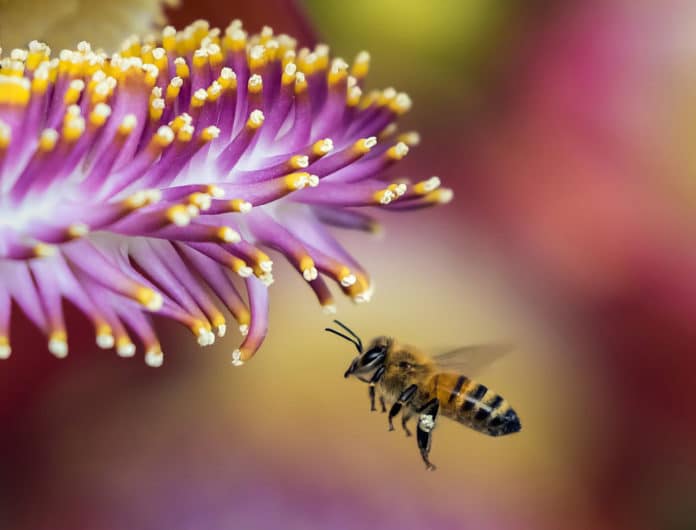A new study by the University College London and the University of Sassari, Italy- offers evidence that honeybees modify their social interactions in response to a common parasite. The study has found that honeybees increase social distancing when their hive is under threat from a parasite.
Honeybees are social insects. Hence, they are vulnerable to pathogens and parasites due to the dense contacts network among highly related nestmates. To counteract a harmful mite, honeybees modify space and the interactions between nestmates to increase the social distance between young and old bees.
Co-author Dr. Alessandro Cini (UCL Center for Biodiversity & Environment Research, UCL Biosciences) said, “Honeybees are a social animal. They benefit from dividing up responsibilities and interactions such as mutual grooming. Still, when those social activities can increase the risk of infection, the bees appear to have evolved to balance the risks and benefits by adopting social distancing.”
In this study, scientists evaluated the presence of ectoparasite Varroa destructor in honeybee colonies induced changes in social organization. The Varroa mite is one of the main enemies of honeybees. It causes several harmful effects on bees at the individual and colony levels, including virus transmission.
Honeybee colonies are organized into two main compartments: the outer one occupied by the foragers and the innermost compartment inhabited by nurses, the queen, and brood. This within-colony spatial segregation leads to a lower frequency of interactions between the two compartments than those within each compartment. It also protects the most valuable individuals (queen, young bees, and brood) from the outside environment and thus from the arrival of diseases.
By comparing colonies that were or were not infested by the Varroa mite, scientists found one behavior, foraging dances, that can increase mite transmission, occurred less frequently in central parts of the hive if it was infested. They also found that grooming behaviors became more concentrated in the central hive.
Scientists noted, “It appears that overall, foragers (older bees) move towards the periphery of the nest while the young nurse and groomer bees move towards its center, in response to an infestation, to increase the distance between the two groups.”
Lead author Dr. Michelina Pusceddu (Dipartimento di Agraria, University of Sassari) said: “The observed increase in a social distancing between the two groups of bees within the same parasite-infested colony represents a new and, in some ways, surprising aspect of how honeybees have evolved to combat pathogens and parasites.
“Their ability to adapt their social structure and reduce contact between individuals in response to a disease threat allows them to maximize the benefits of social interactions where possible and to minimize the risk of infectious disease when needed.
“Honeybee colonies provide an ideal model for studying social distancing and for fully understanding the value and effectiveness of this behavior.”
Journal Reference:
- Michelina Pusceddu et al., Honey bees increase social distancing when facing the ectoparasite Varroa destructor, Science Advances (2021). DOI: 10.1126/sciadv.abj1398
